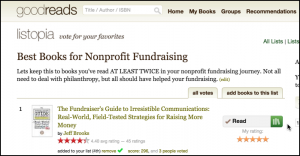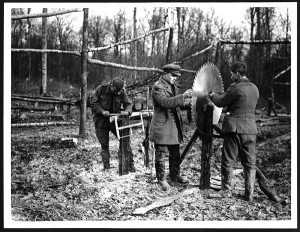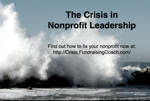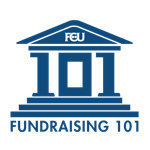Marc A. Pitman's Blog, page 31
September 1, 2015
How To Tell a Powerful Fundraising Story
 We've all heard that science proves stories are more powerful than statistics. Kendall Haven's book Story Proof: The Science Behind the Startling Power of Story goes into great detail about hundreds and hundreds of studies. We've seen storytelling seminars for nonprofits and read the blog posts extolling the virtues of stories for fundraising. But how do we actually tell powerful stories?
We've all heard that science proves stories are more powerful than statistics. Kendall Haven's book Story Proof: The Science Behind the Startling Power of Story goes into great detail about hundreds and hundreds of studies. We've seen storytelling seminars for nonprofits and read the blog posts extolling the virtues of stories for fundraising. But how do we actually tell powerful stories?
Three simple steps to telling a powerful fundraising story
Since human beings are wired for story, you'd think it would be easy for us to tell our nonprofits' stories, don't you? And that is a huge part of the problem: powerful fundraising stories are not about the nonprofit, they're about the donor!. (Click here to tweet that.)
Here are three steps to making a powerful fundraising story:
Make the donor the hero
As Donald Miller said an a recent podcast, everyone wants to be the hero of the story. If we cast our nonprofit as the hero, we are immediately putting ourselves in conflict with the donors. They think they should be cast as the hero. They'd like the nonprofit to be the "mentor or guide. They'll never tell you this in a focus group or survey, but make this switch and watch their giving increase. (Just watch Tom Ahern's quick video to see how powerful this switch can be. It helped one nonprofit go from raising $5,000 per newsletter to raising $50,000!)
Make the story about an individuals, not statistics
As fundraisers, we want to convince donors that giving to our charity is a good investment. So we tend to load our communications with statistics, pie charts, and big numbers. In a New York Times article, Temple University's John Allen Paulos describes the problem inherent in this approach:
"In listening to stories we tend to suspend disbelief in order to be entertained, whereas in evaluating statistics we generally have an opposite inclination to suspend belief in order not to be beguiled."
If our goal is to move people to taking action, the action of donating, than we do not want to be unnecessarily getting their guard up!
Also, humans are wired to identify with individuals, not statistics. So rather than say what percentage of donations "goes go to programs" or how many "thousands of [kids, acres, paintings] are saved," talk about one person who benefits from the donor's generosity.
This forces you to figure out what your typical donor wants. A good place to find out is by talking to existing donors and listening to why they give to your mission.
Edit ruthlessly
No matter how committed to powerful fundraising stories we are, "corporate speak" will sneak up on us. One of the most ruthless editing tools I teach my coaching clients is the "we/you" test. (I'm sure I learned this from someone. Probably Tom Ahern or Jeff Brooks.)
To do this test:
Print out your work.
Get a black Sharpie and a red Sharpie.
Circle all the words "we," "our," and "ours" in red. If you want to be even stricter, circle the name of your nonprofit in red too.
Circle all the "you," "your," and "yours" words in black.
If your page is full of red, your fundraising will be in the red. If your page is full of black, your fundraising will be in the black.
I've had clients with as many as 34 "we" references in a one page fundraising letter and only 7 "you" references. Worse, 5 of those 7 "you's" were in the ask! It was like sitting at dinner to an ego-maniac who only talks about himself, then turns to you and says, "Well, that's enough about me. What do you think about me?"
In your fundraising, don't be that guy.
Powerful fundraising stories are less self-serving
Last month, a coaching client told me,
"Marc, I like fundraising so much more since working with you. I got into my work to serve others. Fundraising always felt at odds with serving others. It felt selfish and needy. But now I get to write all my fundraising communications in ways that serve my donors. It's in character with who I want to be. And better still, it's working! We're raising more money this way!"
He's not alone. Last fall, we held our first Nonprofit Storytelling Conference in Seattle. We took two days teaching nonprofit fundraisers and marketers specifics about telling powerful stories and creating a plan for their year. Since then, some attendees have seen their fundraising double. Other have seen fundraising triple! We're now hearing attendees ask questions like, "How do I set my board's expectations? They think this is the new 'normal.' But I'm not sure doubling or tripling our fundraising every years is sustainable."
Wouldn't that be a great question to have to ask?
Free Nonprofit Storytelling Webinar Series
Do you want even more lessons on how to tell a powerful fundraising story? Every Tuesday this month, speakers from the upcoming Nonprofit Storytelling Conference are sharing their tips and tricks in a series of free webinars. You can sign up for these free webinars at: http://bit.ly/NPStoryConfSeries
The post How To Tell a Powerful Fundraising Story appeared first on FundraisingCoach.com.






August 28, 2015
Happy National Bow Tie Day!
I love National Bow Tie Day! I knew I'd worn bowties since kindergarten but a while back, my mother found a picture of me wearing a bow tie when I was 3 years old! It seems that my father went through a brief bow tie phase back in the 1970's. I must've caught it from him - but never recovered!
To celebrate, I'm sharing pictures of people who've "tried on" a bow tie with my bow tie business card. You can see the over 150 pictures:
on Facebook
or on Google
How would you look in a bow tie?
Here is a sneak peak at the over 150 images in those albums...including me at 3 years old!
Get your own bow tie business card
As is my National Bow Tie Day tradition, sign up here to get a free bow tie card of your own! You could even send me a picture of you "wearing" it! Just email that to marc@fundraisingcoach.com.
The post Happy National Bow Tie Day! appeared first on FundraisingCoach.com.






August 21, 2015
[Guest Post] Telling Your Story In the Grant Proposal Budget
I'm thrilled to introduce you to Diane H. Leonard, GPC. Diane is an accomplished grant professional who's been providing provided grant counsel to nonprofit organizations of all sizes for over a decade. Since starting her firm - DH Leonard Consulting & Grant Writing Services, LLC - in 2006, she has secured more than $32 million dollars in competitive grant funds for clients from the government (federal, state, and local) and private foundations. So naturally, when a reader asked about how to share his story in the budget section of his grant applications, I reached out to Diane! Serendipitously, it turns out she's giving a webinar on "How to Write a Bulletproof Grant Budget" in September! You can learn more about Diane on her site www.dhleonardconsulting.com or follow her
August 20, 2015
Are you giving donors the right clues?
When we're close to a system or procedure, we just assume everyone else knows what we know.
We do this all the time with donors and board members. It's like we've set up a system of roads but only put half the road signs up.
I explain more in this short video. (I tried to do a Periscope broadcast, but it failed. So I created this video instead!)
The post Are you giving donors the right clues? appeared first on FundraisingCoach.com.






August 13, 2015
[Guest Post] Communicate More Often to Renew More Donors
Today's guest post is by Dennis Fischman. Dennis is the creator of the Communicate! blog, dedicated to helping nonprofits win loyal friends and getting the support they need. In this post, he shows you how to use what you already have to communicate in multiple channels through the magic of repurposing. Dennis will be presenting the next Nonprofit Academy session called: Delight Your Donors With Better Communication (and Spend Less Time Doing It). You can find more about Dennis on his site at: http://www.dennisfischman.com/
Communicate More Often to Renew More Donors
It’s a facial expression that’s become way too familiar. When I talk with nonprofit organizations about communicating with their donors, they give me a sheepish look.
“We know we should be in touch more often,” the Executive Director says. “But we have so little time, and there are so many ways people expect to hear from us. Newsletters, annual reports, website updates, email, social media...not to mention local newspapers and community TV. How do we keep coming up with new ideas for stories?”
You don’t need to wear that sheepish look in your organization. Yes, you should be in touch. And yes, there are so many channels for your communications today! But there’s a simple way to make sure you always have the stories to tell and the messages to share: repurpose.
Your Donors Want to Hear from You
It’s not just a feeling that lets you know you should be in touch with your donors more often. Just look at the statistics on donor renewal.
In the U.S., only 30% of first-time donors to nonprofit organizations renew their gift the next year. Think about that. If a donor gave her first gift to you in 2014 and you do nothing about it, the chances are better than two out of three that she’s NOT giving to you this year.
Why do so many donors disappear after the first gift? Well, from their point of view, they didn’t disappear. You did.
Jay Love, the CEO of Bloomerang, tells us the top reasons donors who could afford to give again, don’t:
Thought the charity did not need them - 5%
No information on how monies were used - 8%
No memory of supporting - 9%
Never thanked for donating - 13%
Poor service or communication - 18%
You should be in touch with your donors because it makes money for your nonprofit—and costs you money if you don’t!
How to Make Your Communications Easier
Nonprofits make communications hard. We think that every time we write a blog entry, or send direct mail, or post to social media, we have to come up with a new idea. We should remember the old mantra, “Reduce, reuse, recycle.”
REDUCE the time and effort it takes to communicate with your donors. It’s not a bad thing for your donors to hear the same message again and again: it’s a good thing! As Marc A. Pitman has said on a post about the myth of donor fatigue:
The ad guru David Ogilvy is supposed to have said that it takes a person hearing the same message seven times before they take action. So make sure to tell the stories seven times.
REUSE content in the same communication channel. Yes, you can use the same content with only minor tweaks.
You wrote a great blog entry for Mother’s Day 2012? Update it and republish it for Mother’s Day 2013.
You posted a link on Facebook that got a lot of attention? Post the photo from the linked article, with a caption. Post a quote from the article and ask for comments. Take the idea of the article and turn it into a poll.
You tweeted a message? Tweet it at different times, every day, for a week. Different people are going to see it each time.
RECYCLE content in different channels. That blog entry could be an article in your newsletter, or a great op-ed in the local paper. The video clip on your website could be included in your thank-you email.
More Ways to Delight Your Donors
I’ll be sharing more ideas about how you can repurpose what you’ve already written or recorded in a Nonprofit Academy webinar, Delight Your Donors With Better Communication (and Spend Less Time Doing It). Attend this webinar to learn how to build stronger relationships with your donors by communicating more often--and spending less time doing it. You will find out:
What your donors really want to hear
How to create a message your donors will be glad to read
How to use one great idea on your blog, on social media, in print, and on video
Why your donors will thank you
Sign up for the September 1 webinar today, and you’ll be ready to renew more donors this year.
The post [Guest Post] Communicate More Often to Renew More Donors appeared first on FundraisingCoach.com.






August 3, 2015
62 Books to put on Your Nonprofit Leaders Summer Reading List
It's August. If you're like many nonprofit leaders, this is the month of the last minute scramble to get out of the office and grab some vacation. As you're looking to go, consider taking a book with you. And since you're a nonprofit leader, I'd suggest you make that book one on fundraising. Here are a few lists to consider.
A list of 20 top books selected by TopNonprofits.com
A list of 5 surprising books first posted on this blog in 2013
And a list of 44 books being built over on Goodreads
Before you head out of the office, skim these lists and see if one of the titles pops out to you!
Top 20 Fundraising Books

The folks over at TopNonprofits.com are great at analyzing data and putting together lists. That's how they created the Top 20 Fundraising Books - they mixed Amazon sales data with voting from top influencers. And this is what they crowned as the top 20:
Making Money with Donor Newsletters by Tom Ahern
Relationship Fundraising by Ken Burnett
Asking Styles by Andrea Kihlstedt
Fundraising Guide to Irresistible Communications by Jeff Brooks
Fired-Up Fundraising by Gail Perry
The Essential Fundraising Handbook for Small Nonprofits by Kirsten Bullock, Betsy Baker, Gayle L. Gifford, Pamela Grow, Lori L. Jacobwith, Marc A. Pitman, Sandy Rees, Sherry Truhlar
Keep Your Donors by Tom Ahern and Simone P. Joyaux
Building Donor Loyalty by Adrian Sargeant and Elaine Jay
Asking by Jerold Panas
Retention Fundraising by Roger Craver
How to Write Fundraising Materials That Raise More Money by Tom Ahern
Fundraising Principles and Practice by Adrian Sargeant, Jen Shang
It’s Not Just About The Money by Richard Perry and Jeff Schreifels
Major Gift Fundraising for Small Shops by Amy Eisenstein
Train Your Board and Everyone Else to Raise Money by Andrea Kihlstedt and Andy Robinson
How to Raise More Money for Any Non-Profit by Joe Garecht
Donor-Centered Leadership by Penelope Burk
How to Win Friends & Influence People by Dale Carnegie
Ask Without Fear! by Marc A. Pitman
Fundraising Mistakes that Bedevil All Boards (And Staff Too) by Kay Sprinkel Grace
Click through to the Top 20 Fundraising Books list to see the covers and links to get them on Amazon.
Some Surprising Fundraising Books for Your Summer Reading List
 A couple years ago, I put together a list of 5 surprising books that will help your fundraising. These books are:
A couple years ago, I put together a list of 5 surprising books that will help your fundraising. These books are:
Asking Styles by Andrea Kihlstedt
Go for No! by Richard Fenton and Andrea Waltz
The Art of Persuasion by Bob Burg
First Things First by Roger Merrill, Rebecca Merrill, and Steven Covey
Ask Without Fear! by Marc A. Pitman (of course!)
You can read more about why these books were listed at 5 Surprising Fundraising Books for Your Summer Reading.
Fundraising Books I've Read More Than Once
 I read 50-75 books a year. But this spring, I tried creating a list of books that have helped me as a fundraiser and that I've read more than once. Given my volume of reading, this 44 book list is remarkably short.
I read 50-75 books a year. But this spring, I tried creating a list of books that have helped me as a fundraiser and that I've read more than once. Given my volume of reading, this 44 book list is remarkably short.
The Fundraiser's Guide to Irresistible Communications: Real-World, Field-Tested Strategies for Raising More Money by Jeff Brooks
Keep Your Donors: The Guide to Better Communications & Stronger Relationships by Tom Ahern
It's NOT JUST about the Money by Jeff Schreifels
A Spirituality Of Fund Raising by Henri J.M. Nouwen
The 7 Habits of Highly Effective People: Powerful Lessons in Personal Change by Stephen R. Covey
How to Win Friends and Influence People by Dale Carnegie
Retention Fundraising: The New Art and Science of Keeping Your Donors for Life by Roger Craver
God & Mammon: Asking for Money in the New Testament by Jouette M. Bassler
Favor the Road to Success by Bob Buess
Psycho-Cybernetics by Maxwell Maltz
The Fourth Turning by William Strauss
Epic: The Story God Is Telling and the Role That Is Yours to Play by John Eldredge
Asking: A 59-Minute Guide to Everything Board Members, Volunteers and Staff Must Know to Secure the Gift by Jerold Panas
Get Slightly Famous: Become a Celebrity in Your Field and Attract More Business with Less Effort by Steven Van Yoder
Man's Search for Meaning by Viktor E. Frankl
The Pollyanna Principles: Reinventing "Nonprofit Organizations" to Create the Future of Our World by Hildy Gottlieb
Life is Tremendous by Charlie Jones
Godly Materialism: Rethinking Money and Possessions by John R. Schneider
Zig Ziglar's Secrets of Closing the Sale by Zig Ziglar
Acres of Diamonds by Russell H. Conwell
How I Raised Myself from Failure to Success in Selling by Frank Bettger
Personality Plus: How to Understand Others by Understanding Yourself by Florence Littauer
How to Have Confidence and Power in Dealing with People by Les Giblin
The Prayer of Jabez: Breaking Through to the Blessed Life by Bruce H. Wilkinson
The Richest Man in Babylon by George S. Clason
As a Man Thinketh by James Allen
The Five Love Languages: How to Express Heartfelt Commitment to Your Mate by Gary Chapman
Stone Soup by Marcia Brown
First, Break All the Rules: What the World's Greatest Managers Do Differently by Marcus Buckingham
Tribes: We Need You to Lead Us by Seth Godin
Getting to Yes: Negotiating an Agreement Without Giving In by Roger Fisher
Permission Marketing: Turning Strangers Into Friends And Friends Into Customers by Seth Godin
Story Proof: The Science Behind the Startling Power of Story by Kendall Haven
Atlas Shrugged by Ayn Rand
Called to Serve: Creating and Nurturing the Effective Volunteer Board by Max DePree
Think and Grow Rich by Napoleon Hill
Viral Loop by Adam L. Penenberg
The Autobiography of Benjamin Franklin by Benjamin Franklin
Rich Dad Poor Dad: What the Rich Teach Their Kids About Money-That the Poor and the Middle Class Do Not! by Robert T. Kiyosaki
Team of Rivals: The Political Genius of Abraham Lincoln by Doris Kearns Goodwin
The Power of Positive Thinking by Norman Vincent Peale
The E-Myth Revisited: Why Most Small Businesses Don't Work and What to Do About It by Michael E. Gerber
Ask Without Fear!: A Simple Guide to Connecting Donors With What Matters to Them Most by Marc A. Pitman (Goodreads Author)
The Magic of Thinking Big by David J. Schwartz
You can see this list on Goodreads, and add to it yourself. It's at: https://www.goodreads.com/list/show/88054.Best_Books_for_Nonprofit_Fundraising.
That's 62 Books!

Photon cropped from an orginal by Aloha75 on Flickr. Used with permission. https://flic.kr/p/7MaG75
So there you have it. Three lists of books. With only 7 being repeated across the lists, that makes a total of 62 books to help your nonprofit fundraising. Refreshingly, not every book deals with fundraising directly.Which book popped out at you?
As we saw in The Crisis in Nonprofit Leadership, many nonprofit leaders simply don't know much about nonprofit fundraising. Use this month to get one book smarter.
Which book will you choose?
The post 62 Books to put on Your Nonprofit Leaders Summer Reading List appeared first on FundraisingCoach.com.






July 21, 2015
Sharpen your saw this July
 July can be an odd month in fundraising. Many nonprofits finish their fiscal year, so this is the first month with a new goal. Starting from zero.
July can be an odd month in fundraising. Many nonprofits finish their fiscal year, so this is the first month with a new goal. Starting from zero.
Even those that don't have fiscal years starting, July is often a challenging month. Donors tend to be less responsive. Even when donors are in your seaside, summer vacation location, they aren't necessarily interested in talking about philanthropy.
So in many ways, July is a perfect month for learning.
Take Time to Learn Your Craft
As Stephen Covey talks about in his "sharpening the saw" story, it's important to invest time in learning your craft so you can be sharper at what you do. Working hard seems like a smart choice. All your effort is going to cutting wood. But nonstop sawing actually dulls your blade, making work harder and harder, slower and slower. Over time, you become less and less effective.
Counter-intuitively, spending time and money on sharpening your saw actually increases your effectiveness. Each cut makes maximum impact and you can saw the same amount of wood in less time. Taking time to stop and learn makes your work much more effective.
Here at FundraisingCoach.com, we believe in helping you sharpen the saw, we're offering two very special learning opportunities this July.
The Crisis in Nonprofit Leadership
 Last week, we ran a webinar that unpacked research Marc is doing with nonprofit CEO's and research reported in the UnderDeveloped report. If it feels like you're fundraising staff keeps churning, the research shows you're right. More importantly, it shows it's a complex problem involving your board, your CEO, your development director, and even systems that are sabotaging your fundraising. In this training, Marc pulls out 6 areas to focus on and gives detailed actions to take. People loved the webinar so much, we've extended the replay until July 30.
Last week, we ran a webinar that unpacked research Marc is doing with nonprofit CEO's and research reported in the UnderDeveloped report. If it feels like you're fundraising staff keeps churning, the research shows you're right. More importantly, it shows it's a complex problem involving your board, your CEO, your development director, and even systems that are sabotaging your fundraising. In this training, Marc pulls out 6 areas to focus on and gives detailed actions to take. People loved the webinar so much, we've extended the replay until July 30.
You can sign up for the replay at: http://Crisis.FundraisingCoach.com/
Signing up for the replay also allows you to download the slides to use with your team.
Fundraising 101: An overview for board members and "accidental" fundraisers
 One of the most important things your nonprofit can invest in is a proper board orientation. Fundraising 101 was crafted out of Marc's experience of doing board orientations around North America for the last decade. We're now offering this class online. You'll get 3 video lectures, handouts and assessments, and an online forum to ask specific questions. This general overview shows your board where charitable donations really come from, how to most effectively get those donations, and how they can participate for their nonprofit.
One of the most important things your nonprofit can invest in is a proper board orientation. Fundraising 101 was crafted out of Marc's experience of doing board orientations around North America for the last decade. We're now offering this class online. You'll get 3 video lectures, handouts and assessments, and an online forum to ask specific questions. This general overview shows your board where charitable donations really come from, how to most effectively get those donations, and how they can participate for their nonprofit.
This is the foundation of a board training that helped Milton Hospital increase their annual fund 40% in 2009 when overall fundraising went down for the first time since World War II! Although created for board members, we've been surprised to find that executive directors and development directors are loving this broad overview too.
Students get lifetime access to all the course materials - videos, assessments, and the online forum. But enrollment in this class closes July 31. To enroll, get to http://101.FundraisingCoach.com/.
Can Be as Easy as Grabbing a Pen and a Legal Pad
We are thrilled with the results people are getting from the Crisis in Nonprofit Leadership training and the Fundraising 101 online course. These are great ways to sharpen the saw. But it can be as easy as grabbing a pen and legal pad and going to your local coffee shop. Ask yourself: how would you like to feel in 12 months? What would you like to have accomplished? What would you like to have said about you? What skills would you have liked to learn? Then start writing.
We hope you'll join us in dedicating July to sharpening the saw!
The post Sharpen your saw this July appeared first on FundraisingCoach.com.






July 11, 2015
How your nonprofit got into its fundraising mess
Photo by RachePhotos on Flickr. Used with permission. https://flic.kr/p/4bAUoA
It's as though people think that money will just fall from the sky. That like water flows to the lowest point, so funding will flow to them. This "rainbow and unicorn" type of wishful thinking is harming nonprofits and the people or projects the nonprofit serve. It's also harming donors.
Entitlement Fundraising
You see, when nonprofit staff and boards find out that money doesn't just "flow" to them no matter how many happy thoughts they put out to the universe, they get frustrated. And annoyed. Their fundraising appeals start haranguing donors, beating them over the head to give. When this happens, donors move from becoming the source of great joy and goodness to the obstacle blocking the success of the nonprofit.
I call it "entitlement fundraising." It's the give-because-we-are-obviously-worth-it-even-though-you-donor-are-too-stupid-to-see-it message. I've actually seen nonprofit staff inconvenienced by fundraising! "If people would just give, we wouldn't have to do this dirty asking for money work."
Newsflash: Entitlement fundraising works about as well as slash-and-burn agriculture. You may see a harvest once in a while, but you won't be able to rely on it to consistently fund your nonprofit.
Leading a Nonprofit Requires Getting Good at Fundraising
Any organization needs revenue to support its work. The baker downtown probably got started because she was amazing at baking. Over time, people kept saying, "You ought to open a shop." And she did. But if she doesn't get equally amazing at marketing and sales, she's going to go out of business. People don't just "know" to buy from her. She's not the center of their universe. She needs to connect them to her baking to get them to come in.
It's the same with nonprofits. Nonprofits still need money to run. Wesley from The Princess Bride might even say
"Nonprofit life is fundraising, highness. Anyone who tells you differently is selling something."
The Wrong Way to Get Good at Fundraising
The way many nonprofits try to "get good" at fundraising is by hiring a fundraiser. The problem is: you can't subcontract your fundraising. Even if your fundraiser is amazing at getting gifts, every single aspect of your nonprofit affects the fundraising staff's ability to raise funds.
This "subcontracting fundraising" mindset results in systems that actually sabotage your nonprofit's ability to raise money. This entitlement mindset actually gets baked into the DNA of your culture. Instead of the donors, it's now the development office that becomes seen as the roadblock to the nonprofit's success.
Does This Sound Familiar?
Here's how this often plays out:
Founder starts nonprofit and becomes the executive director.
She realizes she needs funding so leans on her board to make it happen.
Her board doesn't know how to do fundraising so they look back to her to get it done.
Everyone gets frustrated. She sees fundraising as her boards responsibility. Her board knows they're all volunteers and sees the revenue side of the nonprofit as her responsibility as the executive director.
Exasperated, they try to hire a fundraiser without realizing that this will add to the nonprofit's expenses before it adds to their revenue.
The fundraiser comes into this toxic environment with unrealistic expectations and tries his best to connect with donors.
Guess what? Donors are not connected because all the time the board and executive director could have spent growing relationships with donors they instead spent pointing fingers at each other.
The fundraiser doesn't live up to the unrealistic expectations of the board or executive director and either quits or is fired.
A new search goes on. And the cycle repeats. Except it seems harder and harder to find a qualified fundraiser that can actually do the job.
Sound familiar? This vicious cycle is becoming an ever growing wave crashing into nonprofits, washing away any hope of them sustaining their mission. This is the current crisis in nonprofit leadership. And it's affecting nonprofits of all sizes.
The Crisis in Nonprofit Leadership
The good news is neither the board, nor the executive director, nor the fundraiser are bad people. But it gets disorienting as the wave crashes over you again and again. Fortunately with some simple tactical changes, they can get re-oriented and do a great job for their nonprofit. The study by CompassPoint called "UnderDeveloped" documents these findings and suggests the changes needed to break this vicious cycle and bring stability to nonprofits.
Thursday, July 16 at 1 p.m. I am giving a webinar that reviews these findings and will show you how to stop the cycle. The posts on this FundraisingCoach.com blog are loaded with these tips, but in this webinar I'm concentrating on the ones that will give you the quickest results. We'll cover changes you can make with your board, with the executive director, and with the fundraising staff.
I've been teaching these strategies at nonprofit leadership summits and regional trainings for the past 18 months. I know they work. And I want them to work for you so I'm bringing the training to your desktop. Reserve your spot at:
http://Crisis.FundraisingCoach.com/
The research has been done. There is a way out of this mess. But to get out of this crisis in nonprofit leadership you're going to have to commit to moving away from the vicious cycle of entitlement fundraising.
The post How your nonprofit got into its fundraising mess appeared first on FundraisingCoach.com.






July 8, 2015
[Guest Post] 9 Shocking Stats that Should Convince Your Church to Start Using Mobile Giving Today
Today I am pleased to introduce you to Tithe.ly and Dean Sweetman. Many of you know, I've pastored a church for years. We were early adopters of online giving because I knew people should be able to give when they were doing bills at home if they wanted. I wish there had been an app like Tithe.ly! In this post, Dean shares why your church should move into mobile giving. He knows. For over 30 years, he's been involved in ministry and building businesses that support the work of the Church. He’s helped plant over 50 churches and raised millions of dollars to spread the Gospel, equip leaders, and change lives. Now Dean spends his time focused on using technology to advance the Kingdom. When he’s not helping churches grow their giving with Tithe.ly he’s spending time with his family and new grandson!
9 Shocking Stats that Should Convince Your Church to Start Using Mobile Giving Today
by Dean Sweetman
Do you have a smart-phone?
Right, dumb question. Of course you have one. You’re probably reading this post on your smart-phone right now. Either that or it’s sitting on your desk two feet from your keyboard.
Smart-phones are incredible devices. I mean, ten years ago we were still using dial-up on desktop computers that had less processing power than modern day mobile devices. It’s crazy.
Technology advances so fast.
But for some reason, the Church lags behind.
The offering process in churches, when ushers pass baskets down the rows and worshippers voluntarily give their tithe, offering, etc by dropping in checks or cash, has remained basically unchanged since the 19th century...that’s over 200 years!!!
Why is that...and should the Church be looking to modernized and support new methods of giving? I think so. Here are a few staggering stats to illustrate why I think we should come into the modern age of online and mobile giving in the Church.
Ericsson estimates that by 2020, 90 percent of the world’s population over 6 years old will have a mobile phone with broadband internet access.
According to Pew Research Center, like me, 44% of American adults slept with their phone last night.
The federal reserve shows that the number of checks paid continues to decline, falling to 18.3 billion in 2012 — less than half the number of checks that were paid in 2003.
Roughly 80% of Americans carry $50 cash or less in their wallet and 9% don't carry cash at all.
74% of Americans say they write no more than one check per month.
Millennials don’t even know what a checkbook is! [Just my opinion :)]
86% of church giving still happens via check.
Only 7% of churches in the US offer a way to give via a mobile device.
Traditional tithing envelopes don’t seem to work for a generation as mobile as Millennials.
The Apple Effect
If these stats haven’t convinced you to start seriously considering mobile giving for your Church, then think about what the likes of Apple, Starbucks, Amazon, and many others have done to train churchgoers. If Apple makes it simple to purchase something from iTunes, then it better be as simple for them to give to their local church. You see...your members are being shown how simple it can be, and soon they'll expect the same type of mobile giving experience from the churches they attend.
Your Turn
If you add it all up...in just a few short years nearly every member (and their kids) of your church will be walking in with a smartphone in hand. Checking their social networks, reading the bible, fact checking and commenting on sermons, sharing notes, checking on their kids in child-care, and so much more.
Will you make it simple for members to support the great work you're doing by empowering them with a simple to use mobile church giving solution. Or will they have to reach into their pocketbooks only to remember that they've left their checkbook at home for the third week in a row.
Psst. Tithe.ly can help 
The post [Guest Post] 9 Shocking Stats that Should Convince Your Church to Start Using Mobile Giving Today appeared first on FundraisingCoach.com.






July 1, 2015
Thank you for connecting donors with mission
For many FundraisingCoach.com readers, today - July 1st - is the start of a brand new fiscal year. The amount raised starts at zero but the goals are set higher.
As fundraisers, we rarely get thanked, and that's fine. The nature of our work puts the emphasis on the donors and the impact they create through our nonprofits. But today I wanted to pause and say: Thank you.
To all who raise money, thank you.
Because of your work, donors are finding the way to invest in their values.
Because of your work, people are being fed. Kids are being educated. Land is being conserved. Animals are being cared for.
Because of your work, the nonprofit sector is the providing meaningful work for tens of millions of people and their families. (Over 10.7 million people are employed by nonprofits in the United States alone, making it third largest workforce here.)
Thanks for making the world a better place. I firmly believe generosity is hardwired in human beings. It's one of the best parts of us. As a fundraiser, your leadership is helping people express the best in themselves. Thank you.
Here's a video I recorded a few years ago, as a thank you for fundraisers. It applies just as much on July 1 as it does on June 30.
Is today your fiscal new year? Or is it another time of the year? Let us know at: http://FundraisingCoach.com/fiscalyear/
The post Thank you for connecting donors with mission appeared first on FundraisingCoach.com.












